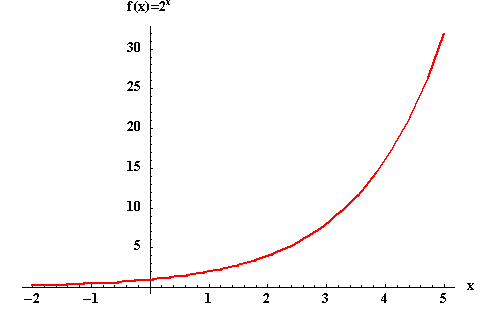 EXPONENTIAL FUNCTIONS
EXPONENTIAL FUNCTIONS EXPONENTIAL FUNCTIONS
EXPONENTIAL FUNCTIONS
Definition of Exponential Function
The exponential function f with base a is denoted by ![]() , where
, where ![]() , and x is any real number. The function value will be positive because a positive base raised to any power is positive. This means that the graph of the exponential function
, and x is any real number. The function value will be positive because a positive base raised to any power is positive. This means that the graph of the exponential function ![]() will be located in quadrants I and II.
will be located in quadrants I and II.
For example, if the base is 2 and x = 4, the function value f(4) will equal 16. A corresponding point on the graph of ![]() would be (4, 16).
would be (4, 16).
 |
Definition of Logarithmic Function
For x >0, a>0 , and ![]() , we have
, we have
![]()
Since x > 0, the graph of the above function will be in quadrants I and IV.
 |
Comments on Logarithmic Functions
 can be written as the logarithmic equation
can be written as the logarithmic equation  .
. |
If you are interested in reviewing any of the following topics, click the appropriate item:

 Equ MATHematics home page
Equ MATHematics home page
